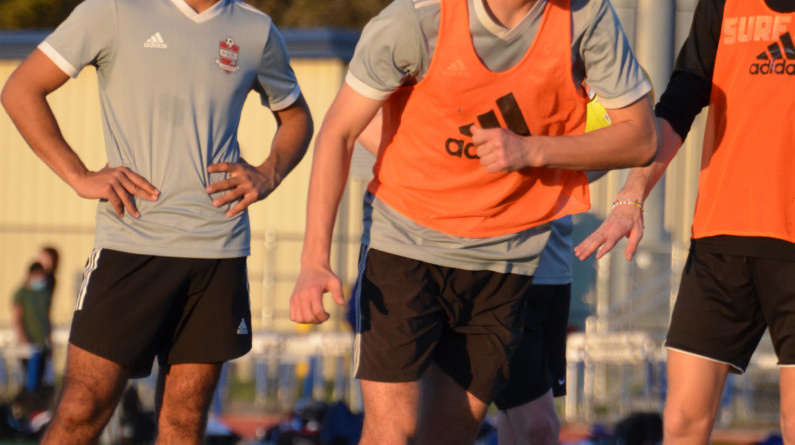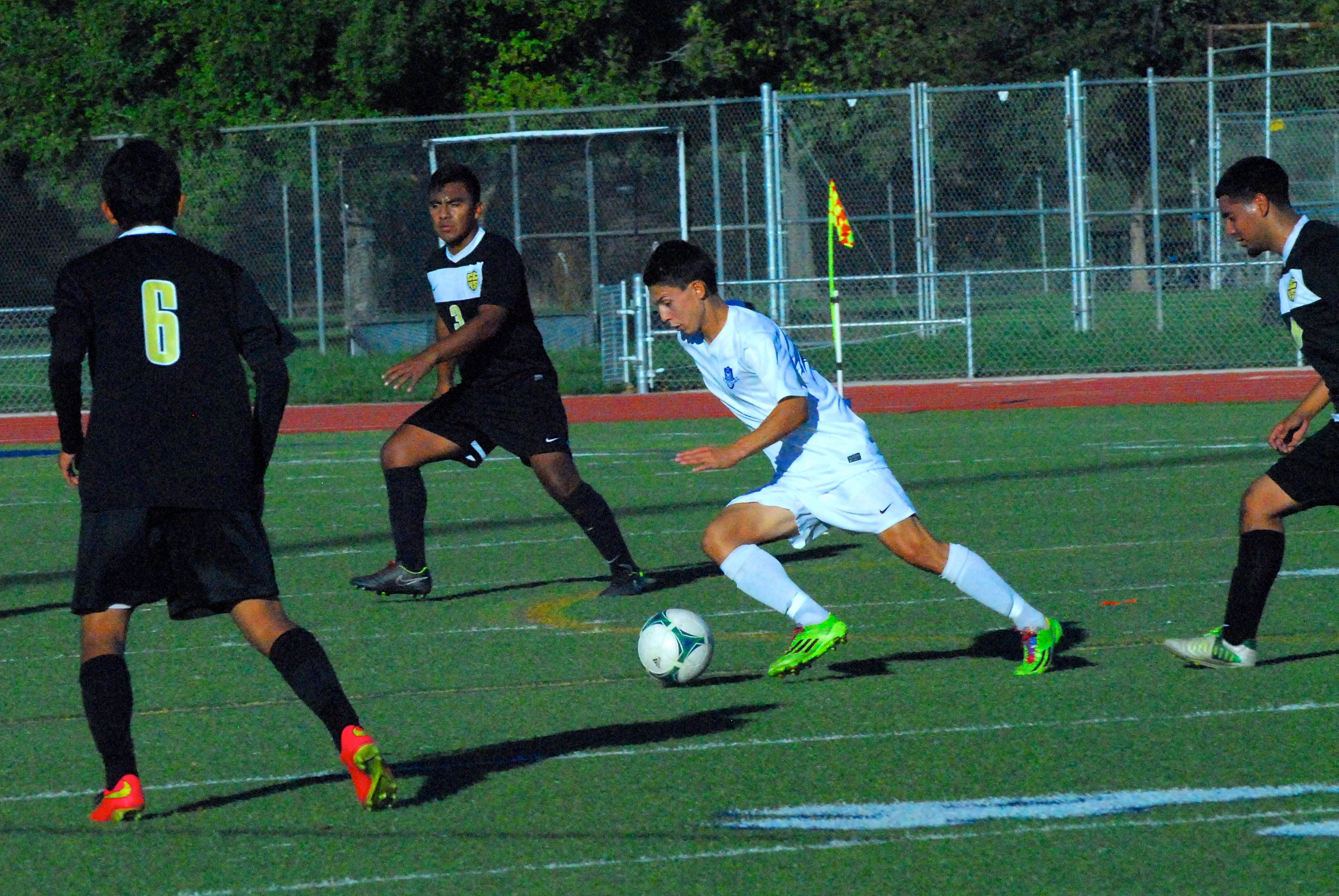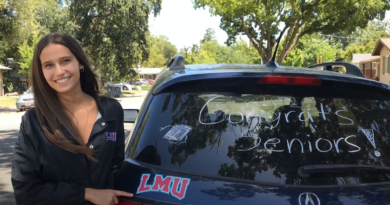Cost of club sports a hurdle for student athletes
Photo Caption- Davis High men’s soccer players practice in their Legacy Soccer Club jerseys.
By Gracie Kishiyama & Genna Olavarri
HUB Editors-in-Chief
Four-year-old Roman Vasilyev kicked a soccer ball for the very first time on the grass field behind Davis High.
Thirteen years later, Vasilyev plays competitive soccer for an AYSO United club team with aspirations to continue playing after he graduates high school this year.
After playing competitively for seven years, Vasilyev decided to try out for the DHS soccer team.
He made the freshman team in 2018, but when he tried out the following year, he failed to make the JV team.
Consistently, the high school teams are primarily composed of players from Davis Legacy Soccer Club teams: a highly competitive and typically expensive soccer program.
A little over a year ago, Vasilyev approached his mom to express his interest in joining a Legacy team.
After looking into the club dues, his mom told him that they could not afford to pay for him to play for Legacy. Vasilyev feels that puts him at a competitive disadvantage.
The expense of club sports is an issue not just in Davis but across the country and is true not only for soccer, but most club sports.
This creates a significant barrier to get children involved in athletics from lower and middle income families.
According to research done by the Sports & Fitness Industry Association, far fewer low income children, ages 13 to 17, participate in athletics than those that in wealthier households.
Just 28.3% of children with a household income under $25,000 played a sport on a regular basis in 2020, contrasted with 48.7% of children from the same age range with a household income of more than $100,000.
In 2018, families spent an average of $693 per child, ages one through 18, on sports each year. Time Magazine reported that youth sports is a $15.3 billion industry that grew 55% between 2010 and 2017.
Club sports in Davis exemplify this socio economic division and may impact the accessibility and equity of DHS athletics.
“I do admit that club sports in general are expensive,” said David Robertson, the Executive Director of the Davis Legacy Soccer Club.
Legacy players have a leg up
Senior Deepak Sah was the only non-goalkeeper on the DHS varsity men’s soccer team this season that does not play for Legacy.
“It’s obvious that I am the only one that is on the varsity team that is also on AYSO,” Sah said.
Sah has played soccer competitively since third grade and plays for the same AYSO United team as Vasilyev. Several of his club teammates tried out this season, but Sah was the only one to win a spot on the team.
“A couple of my close teammates who I personally think are really good didn’t make the team and that’s always upsetting,” Sah said. “If you look at the number of specific club-affiliated members of the high school team, there is definitely a trend.”
The current DHS soccer head coaches are also coaches at Legacy.
“Most of the people that don’t play for Legacy feel discouraged to try out because they know they won’t make the team,” said Charlotte Lee-Smith, a varsity women’s soccer and Legacy player.
There was only one athlete on the varsity women’s soccer team this season that does not play for Legacy.
“(It) is horrible. Everyone should be given an equal chance,” Lee-Smith said. After not making the team as a sophomore, the inherent belief that he would not make the team is precisely what kept Vasilyev from trying out his junior year.
“I figured they were just going to take Legacy players so I didn’t even bother trying out,” Vasilyev said.
That year, the men’s soccer tryouts were even held in the Legacy facilities. However, Robertson affirms that there is no formal connection between the soccer club and the high school teams.
“If a coach is not taking a player that’s going to help their team then I would say ‘shame on them’… They want to take the best players and that’s ultimately their job so I would find it hard to believe that any- one has been excluded because they aren’t playing for Legacy,” Robertson said.
“If we had a coach, for example, in our club that was showing any level of bias that I could prove beyond any doubt or felt that was the case, they wouldn’t be coaching at the club. It’s that simple.”
Legacy player Zach Anderson served as a captain of the varsity team this year. He says head coach Alex Park consulted with him about the roster but in the end, made choices without a Legacy bias.
“He has an idea of some players that he knows or played on his team in years before. But… he picks the best players,” Anderson said. “It doesn’t matter what club you are or if you are even a part of a club, there have been players that have made it from other clubs or even without a club.”
DHS sports teams do not have pay-to-play fees, but with the potential advantage for Legacy players and the high cost to join the club team, it may create indirect financial hurdles to join the public school team.
Like many AYSO players, Sah has stuck with his team because of the bonds he has formed with his teammates. However, finances have also contributed to his deci- sion to not switch to the hyper-competitive Legacy soccer program.
“Cost has always been a factor but I wouldn’t say it was the largest factor of them all,” Sah said.
Legacy costs about $2,000 for the 10- month season depending on the age divi-sion and team level, and uniforms cost $320. These fees do not include individual travel expenses which, according to a survey from Project Play, have become the aspect of club athletics that parents spend the most money on annually.
There is also mandatory volunteering for parents of Legacy athletes. Parents can only opt-out of these duties if they pay an additional $125 fee per player.
The soccer club does have certain pro- grams to make playing for the club more affordable for low and middle income families. Legacy reports it gives upwards of $50,000 per year in scholarship money.
“If someone comes to us and speaks to us and says there’s some financial hardship we’ll always work with them and we will find ways to include them,” Robertson said. “We’re always willing to work with them.”
With their own 16-field facility, the club is also able to host national soccer events. It charges for parking and parents can volunteer to help with parking to help pay off their club dues.
“Some people pay their entire fees just by working at events,” Robertson said.
Legacy is also creating a recreational league that will cost just $200 per season. The league, however, will not be coached by professionally licensed coaches.
Clubs for swimming have different approaches to equity
Two club swimming teams dominate Davis: AquaMonsters and AquaDARTs.
While AquaMonsters is a grassroots swim club, AquaDARTs is a competitive team for the regional DART swimming program. The size and resources of either team impact their approach to accommo- dating swimmers from lower income families.
As a larger program, DART has some private donors who help cover costs for lower income families and is able to offer some scholarship money through the USA Swimming organization.
“We offer scholarships for families that can’t afford the typical programming costs,” said Tim Cutler, the president of the board at DART Swimming in Davis.
According to Cutler, DART has given out $100,000 in scholarships over the past seven years, a number that has recently been increasing.
AquaMonsters similarly endeavors to help make their fees affordable for all families.
According to the co-director of AquaMonsters, Koren Motekaitis, the swim program granted about $20,000 in scholarship money between June 2020 and February 2021.
Motekaitis prioritizes making the program accessible to all families regardless of socioeconomic status because growing up as a swimmer herself, her family felt financial stress paying to support her participation in the sport.
For instance, Motekaitis makes an effort to help parents save money on certain required meet apparel.
“We have swim caps and we don’t put names on them because those names just cost extra money. Your parents can spend $25 dollars for a swim cap which for me is just ridiculous,” Motekaitis said.
Furthermore, the team swimsuit is a plain black swimsuit, and tech suits — or the expensive competition suits — are pro- hibited for swimmers until they are in high school.
The registration fees of swimming also contribute to the high costs of club swim- ming. The national practice group — the highest level of swimming at DART — is $325 a month. In contrast, the highest level of AquaMonsters costs $195 per month.
The least expensive swimming program at DART is $140 per month and the least expensive program at AquaMonsters is $110. The annual fee for DART is $150 per swimmer and the annual fee for Aqua- Monsters is $40.
Both swimming clubs use City of Davis pools and pay to use the facilities at subsidized rates.
“I’m old school in the belief that (since) we are nonprofits and we are subsidized by the city taxpayers, we have the responsibility to keep our fees low,” Motekaitis said.
As with Legacy, many Davis students believe DART is the more competitive swimming program.
Recent DHS alumna Natalie Bercutt contended with some of these preconceptions growing up swimming for Aqua- Monsters.
“A lot of people who have college aspirations end up switching to DART,” Bercutt said.
“Most of the people thinking about swimming in college at AquaMonsters stay fairly local. It was very much different from the norm that I chose to go to a pro- gram that was so large and far away.”
Bercutt swam with AquaMonsters through high school, and now swims for the D1 program at University of Wisconsin Madison and qualified to compete in the 2020 Olympic trials.
“I was very proud of myself for staying with AquaMonsters through college because sometimes I did feel that people were shocked that I was sticking with that club,” Bercutt said.
“I don’t think one is better than the other. I just think they are just different.”
Like the high school soccer teams, Bercutt felt that people knew what clubs people swam for, but that it did not have much of an impact on the team dynamic.
“You’re definitely aware of who is on what club but we would all mix pretty well during high school season,” Bercutt said. “I think it’s less between the people and more just like all the stuff that people say about the two clubs.”
Regardless of program affiliation, there are some inherent costs to compete in the sport that pose barriers for certain fami- lies. “Club swimming as a whole is just kind of expensive,” Bercutt said.
For instance, even with financial help, the high travel costs for meets may be too expensive for some swimmers.
“Some meets were very expensive if they were far away and more important (which) did prevent me from going unfortunately,” said senior Ella Lapuz, who swam with DART for five years.



